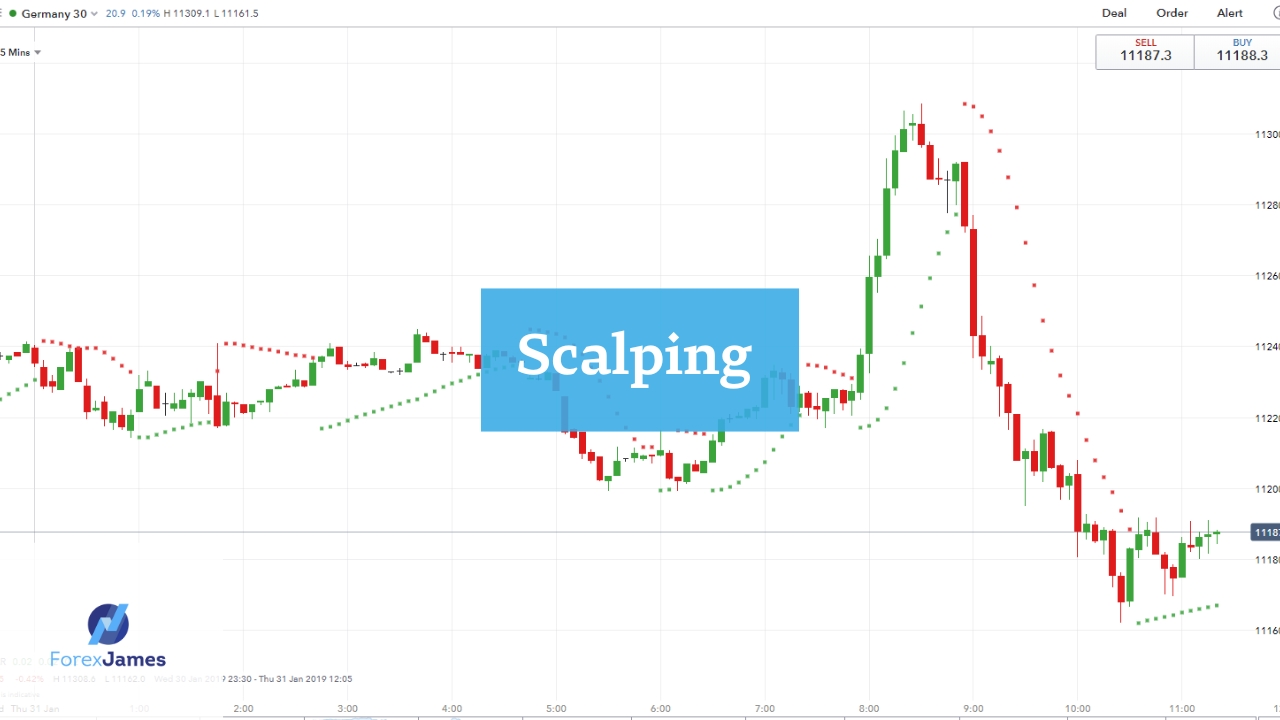Table of Contents
Day trading has gained significant popularity as a potential means of making a living. The allure of financial independence, flexible working hours, and the ability to work from anywhere attract many prospective traders. Therefore, it is crucial to learn day trading with a clear understanding of the challenges involved. In this article, we will explore the possibilities of making a living through day trading, with a focus on realistic profits, capital requirements, and the availability of proprietary trading firms.
Let’s First Discuss The Differences Between Day Trading, Swing Trading, Position Trading, and Scalping…

In the world of financial markets, there are various trading styles that traders employ to take advantage of price movements. Among the most popular approaches are day trading, swing trading, position trading, and scalping. Here are their differences:

Day trading is a short-term trading strategy where traders open and close positions within the same trading day. The goal is to profit from intraday price movements. Day traders heavily rely on technical analysis, chart patterns, and short-term indicators to make trading decisions. They aim to capitalize on small price fluctuations and typically close all their positions before the market closes. Day trading requires active monitoring, quick decision-making, and tight risk management. It can offer high potential returns but also carries higher risks due to the short holding periods.

Swing trading is a medium-term trading strategy that aims to capture larger price movements over several days to weeks. Swing traders use technical analysis to identify trends and potential reversals. They seek to profit from the “swings” or price movements within established trends. Swing traders hold positions longer than day traders and often utilize support and resistance levels, as well as various indicators, to make their trading decisions. This approach requires less time commitment compared to day trading and allows for more flexibility in managing trades.

Position trading is a long-term trading strategy where traders hold positions for weeks, months, or even years. Position traders focus on capturing major market trends and target significant price movements. They rely on fundamental analysis, macroeconomic factors, and market sentiment to make trading decisions. Position trading requires a more patient and relaxed approach compared to day trading and swing trading. Traders in this style aim for higher profits but also accept the potential for longer drawdowns.

Scalping is an ultra-short-term trading strategy where traders aim to profit from small price movements within seconds or minutes. Scalpers execute multiple trades throughout the day, targeting small profits from each trade. They heavily rely on technical analysis, order flow, and quick decision-making to enter and exit positions swiftly. Scalping requires a high level of discipline, focus, and an efficient trading platform. It may provide quick profits but also involves higher transaction costs and requires strong concentration.
Realistic Gains

When it comes to day trading, it is important to have realistic expectations regarding profit potential. While it is possible to achieve higher returns, targeting consistent gains of 1-5% per month is considered more realistic and sustainable in the long run. Day trading involves leveraging short-term price movements and achieving consistent profitability requires discipline, effective risk management, and robust trading strategies.
Big Capital

Day trading typically requires a substantial amount of capital to generate significant profits. This is because day traders aim to capitalize on small price fluctuations by trading larger positions. Having a larger trading capital allows for more flexibility and the ability to diversify trades. Additionally, a larger capital enables day traders to manage risks effectively, as they can allocate a smaller percentage of their capital to individual trades.
Proprietary Trading Firms

Proprietary trading firms, also known as prop firms, have become increasingly common and offer opportunities for traders to access additional capital and resources. These firms provide traders with the ability to trade the firm’s capital, usually in exchange for a share of the profits generated. Joining a supportive firm can be beneficial as it allows traders to leverage the firm’s resources, including advanced trading platforms, research tools, and risk management support. Read here Why You Should Join a Prop Firm If You Haven’t Yet
Examples Of Proprietary Trading Firms:
1. Optiver: a proprietary trading firm based in Amsterdam, with a strong presence in major financial markets worldwide. They specialize in options trading and market making.
2. Citadel Securities: a global market maker and proprietary trading firm that operates in various asset classes, including equities, options, futures, fixed income, and foreign exchange.
3. Jane Street: a quantitative proprietary trading firm that is renowned for its expertise in electronic trading and liquidity provision in global markets. The firm specializes in trading equities, ETFs, options, and futures.
4. SIG (Susquehanna International Group): a global proprietary trading firm engaged in options market making, equities trading, and quantitative strategies. They have a strong research-driven approach and operate in various financial markets.
5. Flow Traders: a leading proprietary trading firm specializing in providing liquidity in exchange-traded products (ETPs), including ETFs, futures, and other derivatives. They are active in global markets and employ sophisticated trading strategies.
However, it is important to consider that prop firms have their requirements and rules. They may require traders to pass evaluations or meet specific performance targets before granting access to their capital. Additionally, traders may need to share a portion of their profits with the firm. Evaluating the terms, conditions, and reputation of prop firms is crucial before entering into any agreements.
How many people go bankrupt in forex trading?
According to the data I obtained from the article source forex. academy, it discusses the reasons behind the bankruptcy of many companies due to forex trading. Some of the main reasons include the lack of proper risk management strategies, inadequate market understanding, excessive leverage usage, failure to diversify portfolios, and inability to adapt to changing market conditions. Forex trading is a volatile and complex market, making it crucial for companies to have a clear understanding of the risks involved and implement proper risk management strategies. When it comes to leveraging, companies need to be cautious not to rely too heavily on it as it can increase the risk of losses. Diversification of portfolios is also necessary to reduce risks, while the ability to adapt to market changes is key to business sustainability. To avoid bankruptcy, companies should have a deep understanding of the market, implement proper risk management strategies, and stay updated on current market trends and developments.
Challenges And Considerations

Learning Curve
Day trading requires a strong understanding of technical analysis, risk management, and market dynamics. It takes time, dedication, and continuous learning to develop the necessary skills and expertise.
Emotional Discipline
Controlling emotions, such as fear and greed, is crucial in day trading. Emotional decision-making can lead to impulsive trading and poor outcomes. Developing emotional discipline and following a well-defined trading plan is essential for long-term success.
Market Volatility
Financial markets can be volatile, and prices can fluctuate rapidly. Day traders need to adapt to changing market conditions and develop strategies that work in various scenarios.
Consistency
Consistency is key in day trading. Traders should focus on maintaining a consistent approach, diligently following their strategies, and avoiding impulsive decision-making.
Conclusion
While it is possible to make a living through day trading, it requires realistic expectations, sufficient capital, and a comprehensive understanding of the challenges involved. Consistent gains of 1-5% per month are considered more realistic in day trading. Additionally, having substantial trading capital is crucial for effectively leveraging price movements and managing risk. The availability of prop firms provides opportunities for traders to access additional capital and resources, but careful consideration and evaluation of their terms and conditions are necessary. Day trading requires continuous learning, emotional discipline, and adaptability to market conditions.
